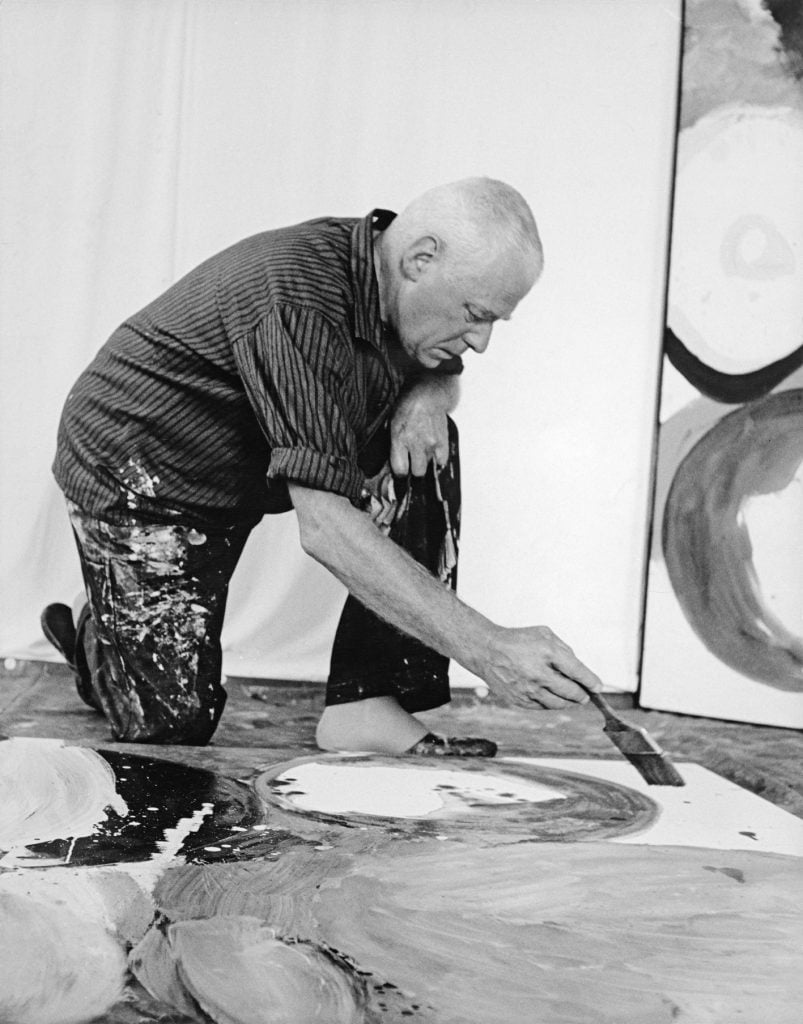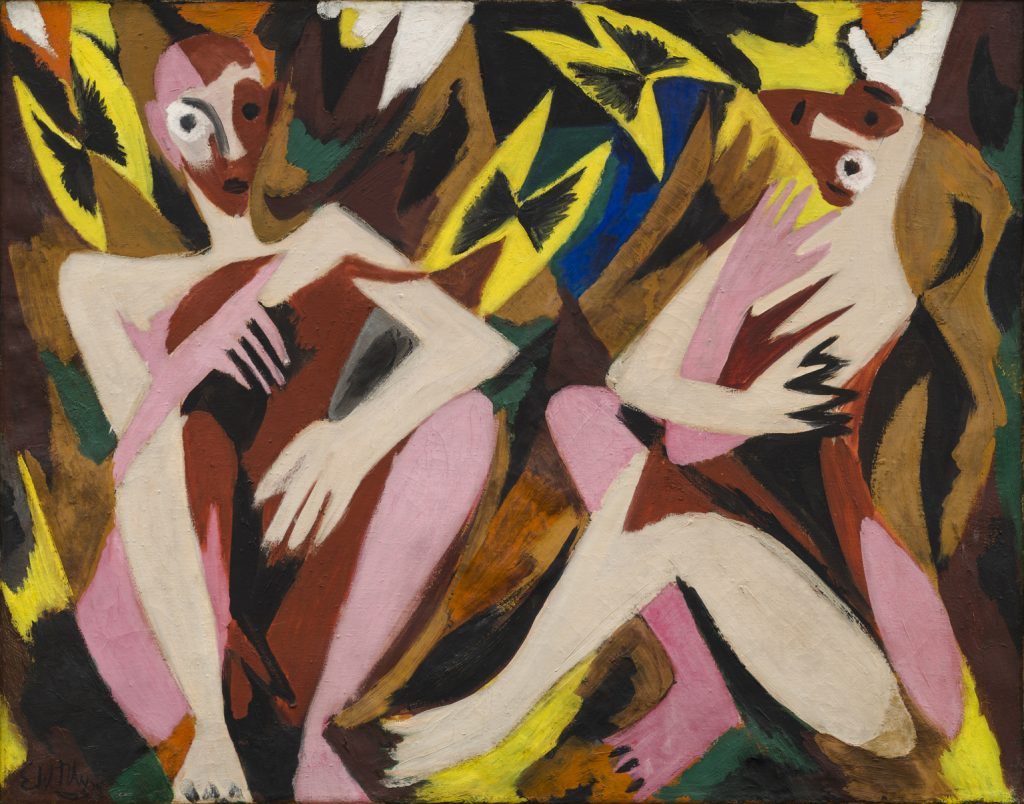Art & Exhibitions
A Major Retrospective in Hamburg Shines New Light on Ernst Wilhelm Nay, Germany’s Premier Postwar Painter
The first comprehensive survey in 30 years offers rare insight into the breadth of his career.

The first comprehensive survey in 30 years offers rare insight into the breadth of his career.

Kate Brown

The Modernist painter Ernst Wilhelm Nay (1902–1968) has long been a staple of German public collections, beloved for his saturated colors and dynamic compositions, which were inflected by Expressionism, Art Informel, and abstraction over the course of his career. Yet even in his home country, there are still dimensions of his work that remain to be discovered, and a retrospective now on view at the Hamburger Kunsthalle—of 120 paintings, watercolors, and drawings, the largest show of his oeuvre in 30 years—seeks to contextualize lesser-known works and introduce Nay’s practice to new audiences.
“The exhibition is the first comprehensive show in decades, and it is addressed to a new generation of viewers and people who might not be so aware” of the artist’s early career, explained Aurel Scheibler, chairman of the board of the Ernst Wilhelm Nay Foundation, which was created in 2005. “It shows a thread that connects all these different periods of his work.” (Scheibler, who is also an art dealer based in Berlin, is the step-grandson of Nay.)

Exhibition view of Ernst Wilhelm Nay’s retrospective at Hamburger Kunsthalle. Courtesy Ernst Wilhelm Nay Stiftung.
Nay, who studied under Karl Hofer at Berlin’s Akademie der Künste, began painting in the late 1910s and was an accomplished artist by the outbreak of World War II. His work was labeled as “degenerate art” and around ten of his works were confiscated from museum collections. The artist himself destroyed one of his own works for fear of reprisal.
In need of money, Nay joined the army in 1939 and was posted to the Eastern front, followed by France. He managed to continue to make art when he was off duty, painting for a time at the studio of an amateur artist he befriended in France. His studio in Berlin was bombed during air raids of the German capital. “He was more free to work [abroad] than in Berlin,” Scheibler said, but “it was hard to get canvases, so he made more so gouaches and works on paper.” Scheibler added that this period of work, as well as that from just before the war, is very rare and of great interest to collectors.
After the war, Nay’s international career took off when he participated in the Venice Biennale in 1948 and the first-ever Documenta in Kassel in 1955 (its curator, Arnold Bode, would also include him in the next two editions). In 1956, Nay represented Germany at the Venice Biennale. He caused a stir at the third Documenta when he presented his now-celebrated “Eye Paintings,” which were hung from the ceiling—a move that divided audiences at the time. He died in his studio in Cologne in 1968.

Ernst Wilhelm Nay, Couple with butterflies (1939). Alexeyev-Brandl Collection. © Ernst Wilhelm Nay Foundation. VG Bild-Kunst, Bonn 2022. Photo: Trevor Good.
Magdalene Claesges, scientific director and head of the Nay foundation’s archives in Cologne, said that scholarly and market focus has predominantly been on his famous “Disk Paintings,” and the retrospective—which was curated by Karin Schick—seeks to offer a more polyphonic perspective on his career, which went through many other phases.
Works from between 1954 and 1962 known as the “Scheibenbilder” have long been in demand: a painting from the period, titled Scheiben und Halbscheiben (1955),set a record for the artist at Ketterer Kunst in 2017, selling for €2.3 million ($2.6 million), well above its €250,000 ($412,007) estimate, according to the Artnet Price Database.
But other periods, including that of the “Fugale Bilder,” which preceded it from 1949 to 1951, have been overlooked and under-studied, Scheibler noted. “This period of his work marks a transition from the more figurative work he was making in the 1940s to his later works, which are more abstract. It is a period that is more flat and constructed,” he said.
Though interest in the artist in Germany has long been strong, more recently major institutions in Europe have made moves to collect his work. The Centre Pompidou in Paris, which acquired Inferno Hallelujah (1964), a moody canvas with his iconic eyes in deep crimsons and blues, in 2014, while the Musée National d’Art Moderne de la Ville de Paris acquired Blau—Orange und Gelb (1967) in 2016. Scheibler said, “People are rediscovering him as one of the major postwar painters of Europe.”
Ernst Wilhelm Nay’s retrospective is on view at the Hamburger Kunsthalle in Hamburg, Germany, March 25 through August 7, 2022.